I’m sure this won’t apply to most Alphatracks readers, but if you shot Cord Industries film and slides in the 1970s, I suggest you check your media. Like now. Don’t even wait to finish reading this. If you have any valuable images on Cord film stock, you should dig them out and make sure those images are still intact.
If you were in to photography in any level in the seventies, you undoubtedly saw ads for Cord film products. You would be hard pressed to find a photo magazine from the era that didn’t have at least one Cord advertisement. They also advertised in newspapers, Sunday supplements, and anywhere else they could reach photo enthusiasts.
Cord: slides and negs from same roll
The offered free rolls of film in order to get film processing revenue. Many other film makes did the same thing, but Cord was unique. You sent an exposed roll of film in for processing and you got back both slides and negatives for each image.
This might sound quaint in this era of pixels and flash memory cards, but it was a big deal in the seventies. There was no electronic publishing in those days, so if you sold to magazines like I did, you had to provide them with transparencies (slides). Color prints or color negatives were useless to magazines of that timeframe. On the other hand, if you wanted to make a color print from a slide, you were likely to be disappointed. Kodak and other labs would make prints from slides, but the prints always seemed to have too much contrast. So you had to take your choice when you shot color: transparency film or negative film. You couldn’t mix and match.
The Cord secret: motion picture film adapted to 35mm cameras
Enter Cord Industries. The story I heard was they discovered that the major move studios wee literally throwing away short ends of film stock. Kodak and other manufacturers made a special “master” film. After a major movie had been edited and was ready for distribution, the studios would duplicate it onto a special master negative. once they had the master, they could make as many film “prints” as they needed to distribute to theaters. The master negative stock was identical to 35mm still camera film, complete with sprocket holes.
It was a clever idea. Film studios didn’t want to bother with all the short lengths of master film left over after duping the film. The master would fit into a 35mm camera and make useable negatives. Because it was designed to make distribution film prints, Cord could process the master like an ordinary still camera negative, then create a set of sides from the negative.
This interested me for two reasons. First, it would allow me to shoot transparencies for the magazines, while at the same time I could get much nicer prints if a client requested one. Even more importantly, when I sent slides out to publications, I was sending the original, irreplaceable image. If it was lost or damaged, there was no back up. With the Cord product, I would still have the negatives and could create another transparency — just like the studios when they made multiple films for distribution.
It sounded good in theory, but I soon found it was less than ideal. In the first place the film wasn’t designed for still cameras and didn’t offer the same detail as the Kodachome or Ektachrome slide films. It wasn’t horrible, but I didn’t feel the quality was as good as the true Kodak slide film.
The biggest drawback, however, was the time it took to get the slides and negs back from Cord. I could get same day service for Ektachome and Kodak would return my Kodachome slides back to me in 48 hours. With Cord, it usually took a week to ten days to get the slides back. I found that delay was unacceptable for a working photographer, so I stopped using their product.
That is probably a good thing. Last week, I was digging through some of my old film archives looking for some old negatives for a project i am working on. In the process, I happened on some of my old Cord slides and opened the box to refresh my memory about what was inside.
My Cord slides and negatives are fading fast!
I was shocked to discover that the film was in very bad shape. Most of the images have a strange pink cast and the slides appear to be fading. On some of them, the color saturation is nearly gone.
I thought that having the original negative would provide a solution to the deteriorating transparencies. When I checked the negs, however, I found they too appear to be fading. The Kodak and GAF slides I have from the same era appear to be in excellent shape. All of the Cord stuff is slowly turning to mush, indicating that I will have to get busy scanning or duping the original media before it is totally useless.
Fortunately, I didn’t shoot a huge amount of this stuff, probably less than a dozen 36 exposure rolls in all. Still, there are images I would hate to lose, either for sentimental reasons or because they still have commercial value. There are persons, places and things on that film that no longer exist. That makes those images valuable from a historical perspective, if nothing else.
I’m sure that a number of digital shooters are unconcerned about the fragile nature of celluloid media. Before you get too smug, read this story about the life expectancy of CD media. Or this one about how long a hard drive will last. Of course, I have owned both hard drives and CDs that have lasted a very long time, but I have also seen some failures.
I love shooting digital, but I am concerned about long-term storage of my digital images. Flakey hard drives and short life-span CDs could make my minor Cord problems seem really insignificant. Imagine losing thousands of irreplaceable images due to a faulty hard drive and bad back-up media.
Anyone know where I can find a cheap tape backup system?
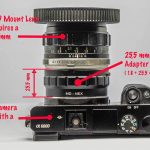

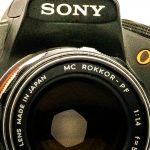


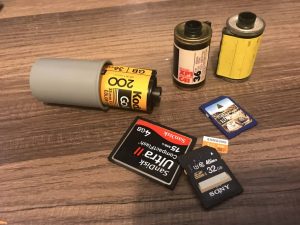
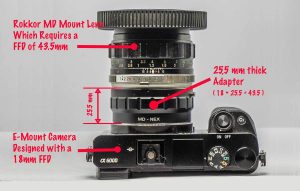

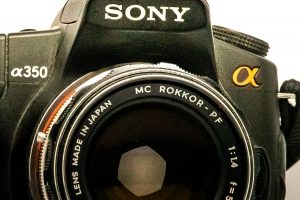

1 thought on “Cord Industries Film: convert to digital before it is too late!”